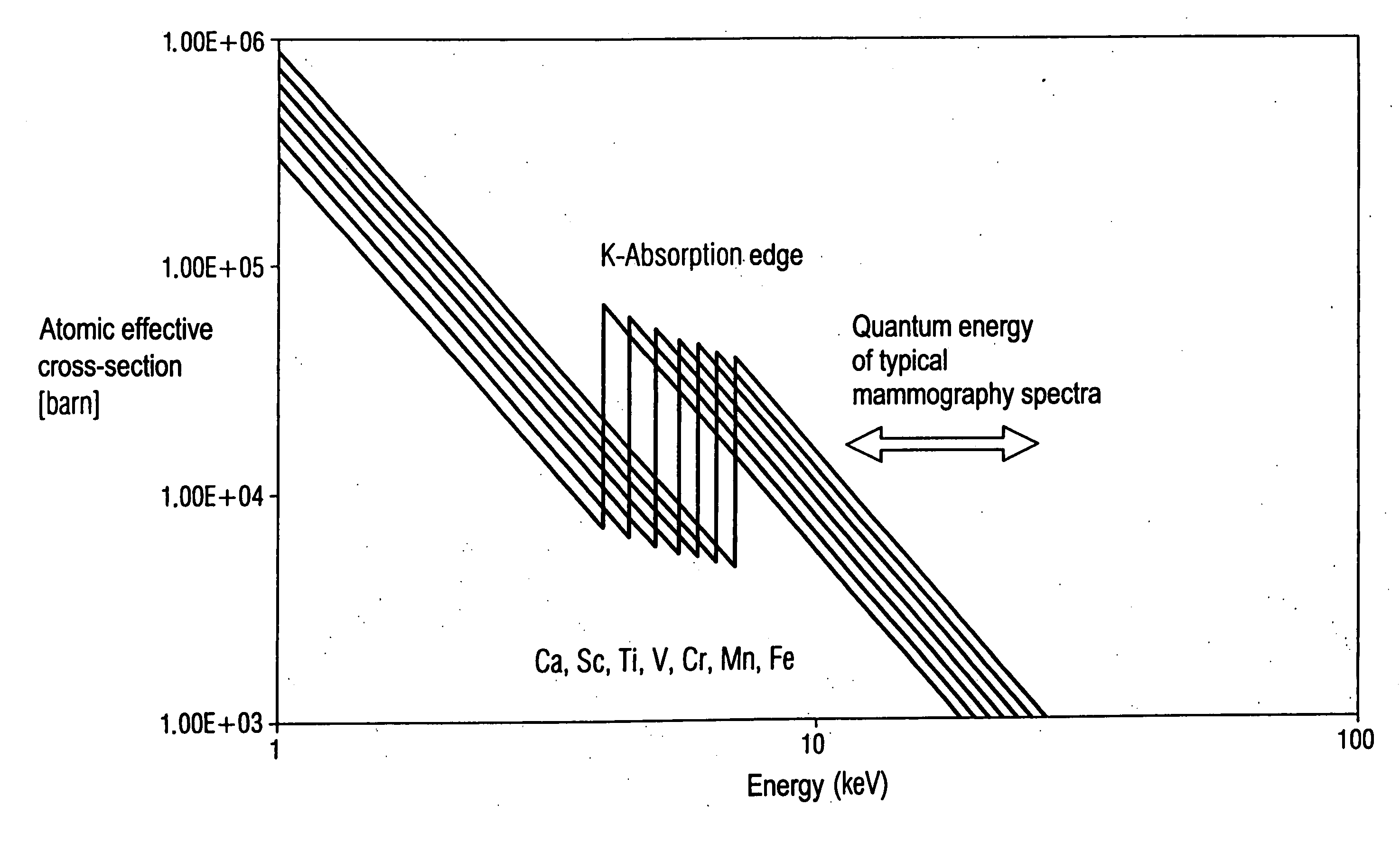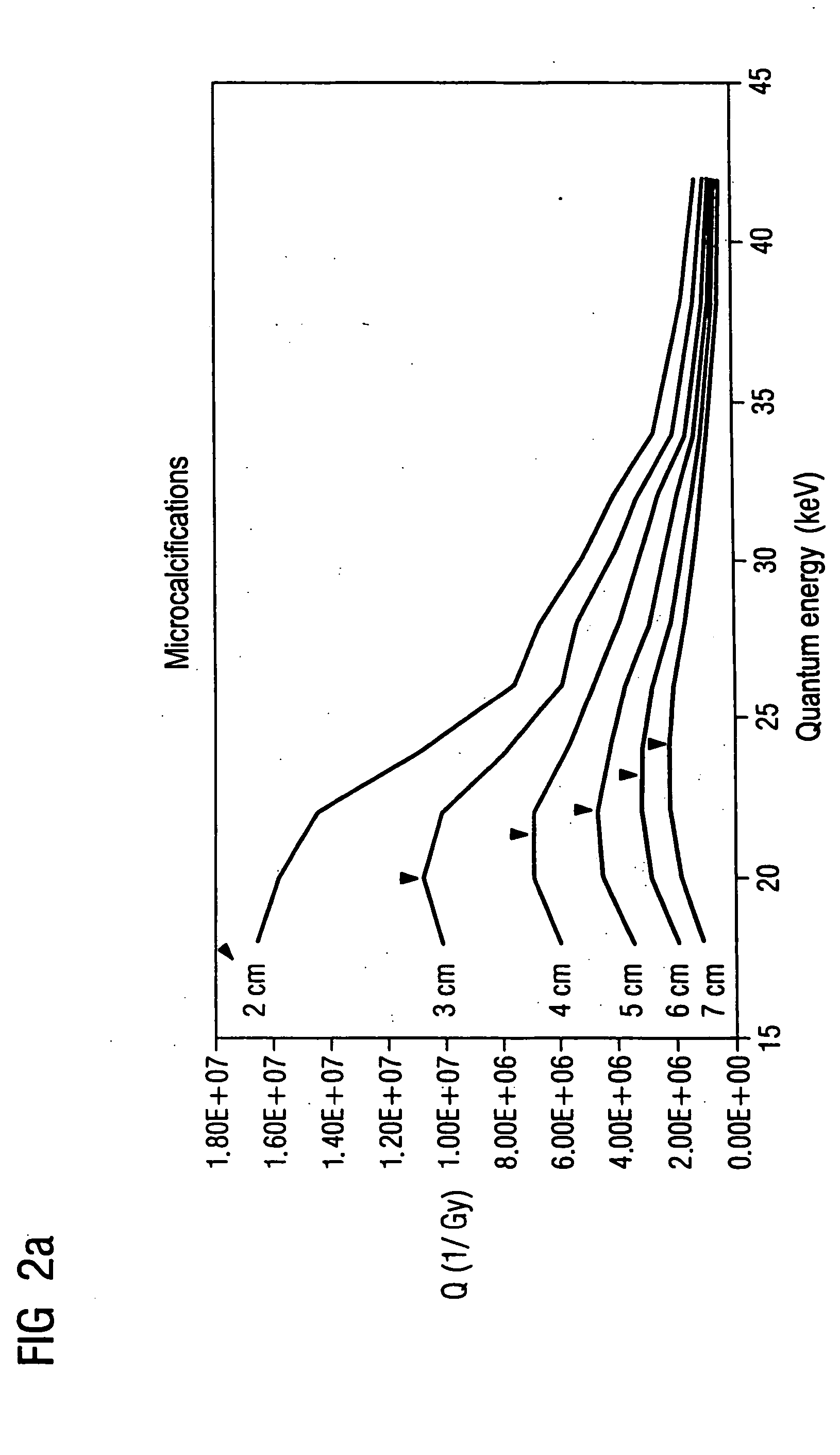X-ray mammography apparatus with radiation dose-reducing filter
a technology of radiation dose reduction and x-ray mammography, which is applied in the direction of radiation diagnostic diaphragms, patient positioning for diagnostics, applications, etc., to achieve the effect of improving the quality of mammographic x-ray exposure and further reducing the radiation dose absorbed by patients
- Summary
- Abstract
- Description
- Claims
- Application Information
AI Technical Summary
Benefits of technology
Problems solved by technology
Method used
Image
Examples
Embodiment Construction
[0017] Effective atomic cross-sections of the elements Ca, Sc, Ti, V, Cr, Mn, Fe are shown in FIG. 1 with quantum energies in the range of 1 to approximately 45 keV. The range of quantum energies typical for mammography (from approximately 15 to 45 keV) is designated by the double arrow. The K-absorption edges are between 4.0 and 7.1 keV. The effective atomic cross-section increases by approximately one order of magnitude at the K-absorption edges. The atomic effective cross-sections are on average smaller for x-rays with quantum energies typical for mammography than for x-rays with quantum energies smaller than approximately 15 keV.
[0018] The elements shown in FIG. 1 particularly absorb quantum energies smaller than approximately 15 keV. Such quantum energies are significantly absorbed in tissue and significantly contribute to the radiation dose absorbed by a patient. These quantum energies can be largely suppressed by filtering. Quantum energies in the range between approximately...
PUM
 Login to View More
Login to View More Abstract
Description
Claims
Application Information
 Login to View More
Login to View More - R&D
- Intellectual Property
- Life Sciences
- Materials
- Tech Scout
- Unparalleled Data Quality
- Higher Quality Content
- 60% Fewer Hallucinations
Browse by: Latest US Patents, China's latest patents, Technical Efficacy Thesaurus, Application Domain, Technology Topic, Popular Technical Reports.
© 2025 PatSnap. All rights reserved.Legal|Privacy policy|Modern Slavery Act Transparency Statement|Sitemap|About US| Contact US: help@patsnap.com



